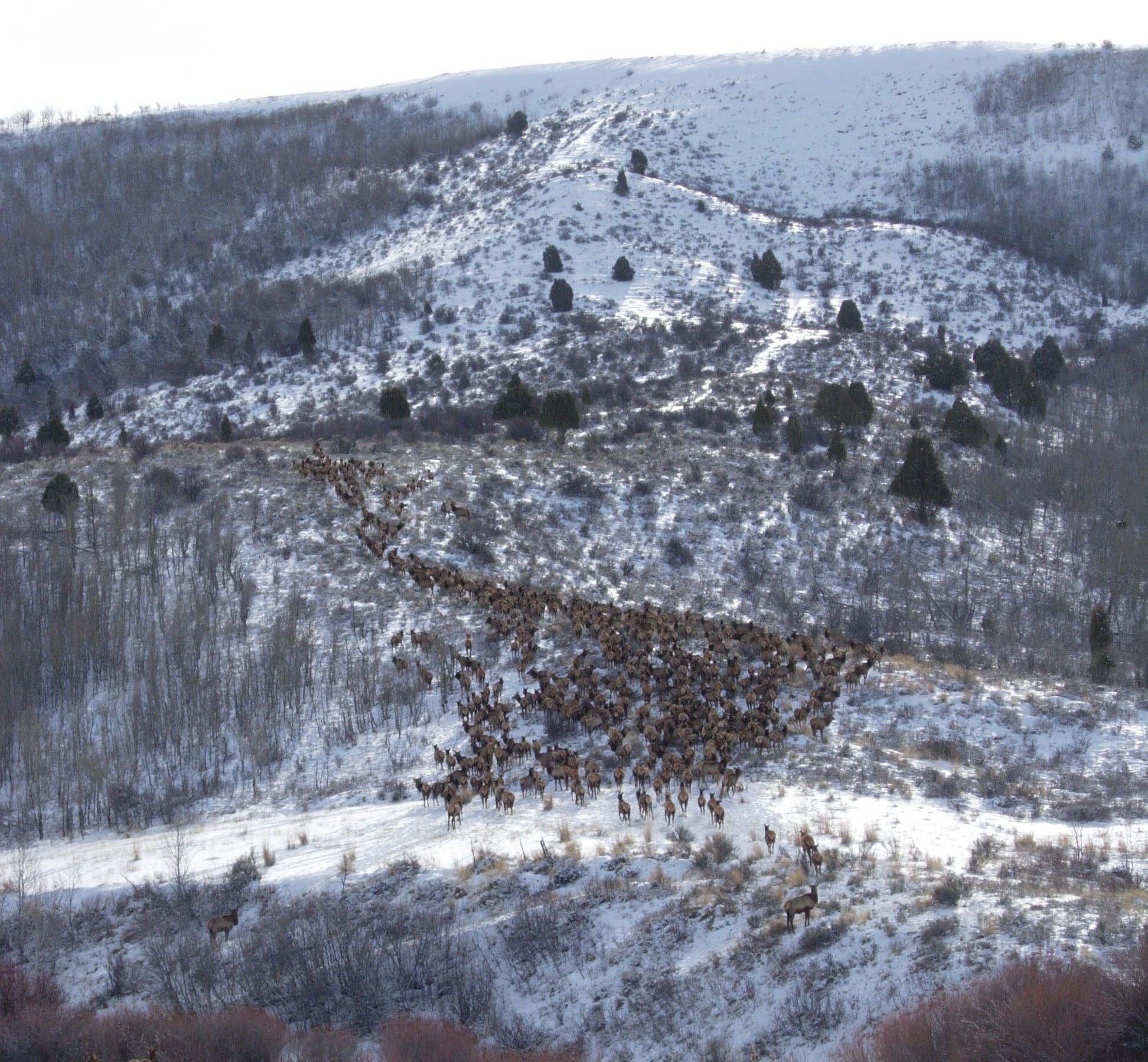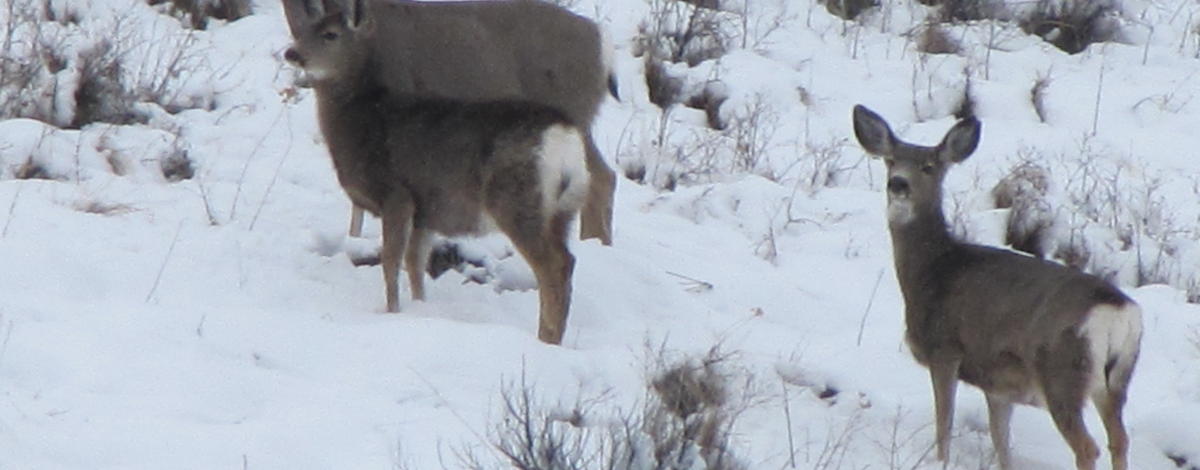
Wintertime is an exceptional time of year to be in the great outdoors. From snow covered mountains and valleys to the intermittent snow-packed sagebrush of the high desert steppe, there is always something to be offered out there, for even the most timid of recreationalists. This is also the time of year when our wildlife is the most vulnerable to the elements. By now most wildlife have reached their wintering grounds where they will spend the next few months waiting for Mother Nature to bring warmer temperatures and green grass back to their world.
These animals spent the entirety of last summer and fall bulking up their fat reserves to persevere through the lean times that Idaho winters offer. They rely on these fat reserves as their normal forage is very limited. In good forage growing years animals tend to have greater fat reserves at the end of summer to help them make it through long winters.
In suboptimal forage growing years, e.g. drought years, the opposite is true. Bad growth years tend to leave them with less fat, resulting in more stress on the animal to survive the winter. Wintering animals are in a sort of “survival” mode, meaning they are not eating for nutritional storage or to maintain their body condition, but just enough to stay alive.
There are many things out on the landscape that can stress wintering wildlife including but not limited to, food and water that is unavailable, predators, cold/harsh environmental conditions, deep snow, and human interactions. While we can’t control all wildlife stressors, the one instance we can is our daily interactions with wildlife.
Just the sight of anything foreign, from a human being to a motorized vehicle in the distance, can increase their heart rate. This increase in heart rate speeds up their metabolism, which eats away at their fat reserves they desperately rely on. Even though most instances are of a non-threatening interaction from our perspective, their fight or flight decision making process begins to manifest. This means animals are expending energy just worrying if they can stay bedded down or if they need to get up and run for safety.
This situation can compound exponentially if this scenario continues to happen across several days or even weeks, especially if these animals are being bumped or make a run for safety. This scenario plays out the same with any stressor, from hunters, hikers with dogs, shed hunters, sleds, bikes, UTVs, and ATVs. If you are just out enjoying what winter has to offer for the day, we must remain cognizant of how our actions are affecting these magnificent animals, and take into account their needs as well as our own.
Everyone enjoys seeing these majestic animals in such picturesque environments. These images make for a lifetime of lasting memories. While you are out there recreating this winter, please give wildlife a large berth and always give them the right of way. While they may not look agitated, they most likely are.
In addition, please stay alert while driving Idaho’s roads this time of year. While the days are getting longer again, there still is plenty of darkness out there. Wintering wildlife are at lower elevations, which means there are more animals on the lower landscapes right now, so there will be a few more animals that may be hanging closer to roads and getting into trouble. Stay alert to avoid collisions and get home safe. Before you step out recreating this winter, please slow down and watch out for wildlife. They need all the help that you can give them this time of year.

